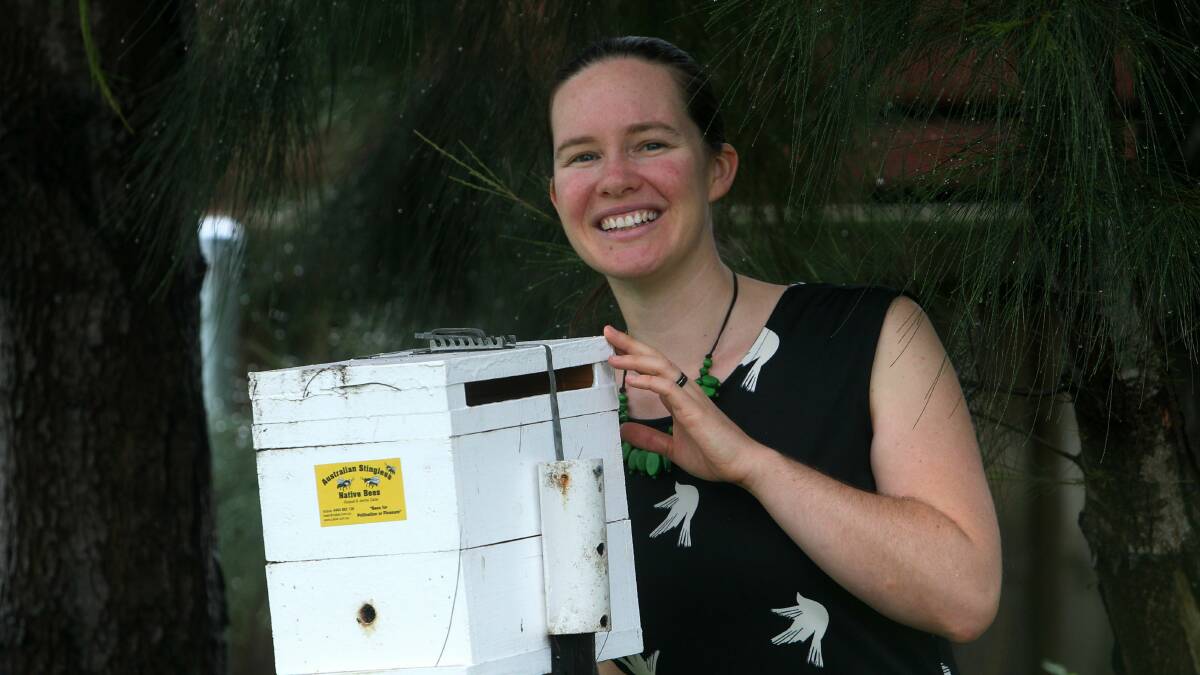When we think of bees, most of us think of the honey bee - but that's only one of thousands of different species of bee.
Subscribe now for unlimited access.
or signup to continue reading
Most of them prefer a solitary life to living in a communal hive and, in Australia, they sport evocative names such as the blue-banded bee or the teddy bear bee.
Yes, the world of bees is much bigger than you might have thought and conservation educator Megan Halcroft will be telling people about them in a Shellharbour City Council workshop next month.
"The honey bee is the European honey bee and, basically, wherever the Euros migrated and settled, the honey bees came with them," Halcroft says.
"Worldwide, there's 20,000 species of bee and in Australia, we've got 1600. In the Illawarra, Blue Mountains and Sydney basin, there are about 200 species of native bee."
Halcroft became interested in bees about 10 years ago while she was studying for a horticulture degree. One of the subjects was apiculture - or beekeeping. She is particularly interested in native bees, many of which do not look or act like the humble honey bee. Some of them are even stingless.
"The honey bee is a social bee and they live in a community and so do the stingless bees," Halcroft says.
"They're the only social bees that we have in Australia. All of the rest live solitary lives.
"They don't have a community, so they don't depend on any other bees to rear their brood; they just do it as an individual insect.
"A lot of bees will live in old borer holes, things like hollow reeds, bamboo, lantana. Then there are teddy bear bees, which live in the ground or, in suburbia, they live in mudbrick houses, where they drill holes in the mud brick and make their nest there."
Bees are important because they pollinate crops and fruits.
The workshop will include ways people can attract native bees into their backyards. Part of this includes making a habitat for them, which is far simpler than setting up a hive for a honey bee. This can include a block of wood with holes drilled in the side or a bundle of lantana stems or reeds.
Shellharbour City Council environment officer Alison Mellor said the idea to run a native bee workshop came from a small project the council funded.
"One of those projects this year happened to be a local school, Mount Terry, wanted a native bee hive," Mellor said.
"They received some funding to install a bee hive that was not for European honey bees, but for native bees in their school garden.
"And we also had a bit of feedback from local community gardeners who were interested in how they could attract native bees to their garden."
Halcroft's native bee workshop at Mount Terry Public School is booked out.
To keep up to date on future Shellharbour City Council workshops, email sustainability@shellharbour.nsw.gov.au.
Halcroft's website is beesbusiness.com.au.


